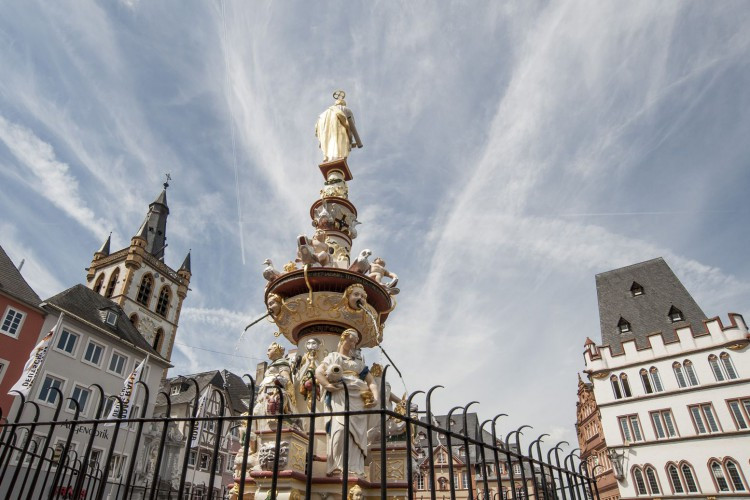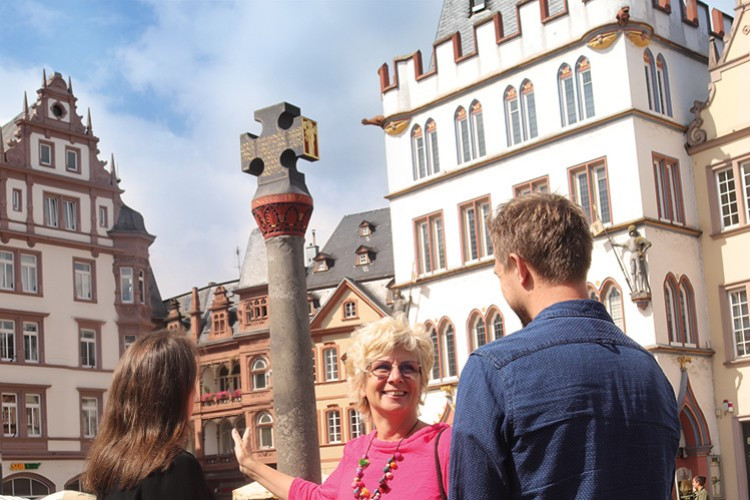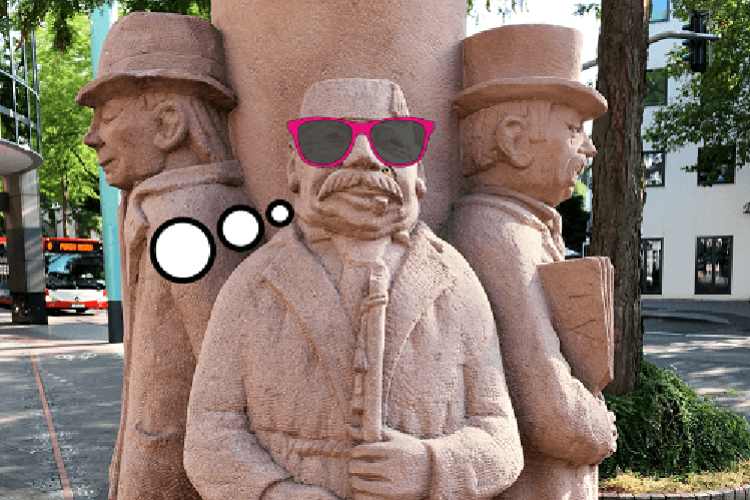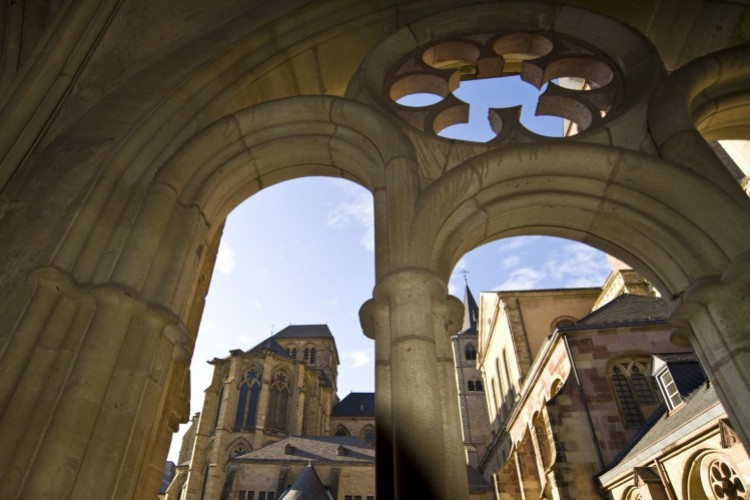Read more
And this hadn’t been just a matter of course: There had been other voices calling for a modern new building, though the majority of citizens were against this. After all, they had paid for the building out of their own pocket back in the 15th century, and also wanted the grand façade, with its well-fortified merlons and symbolic statues, to be seen as an expression of their own identity: The aim was to ensure their wealth and associated power was always visible to the archbishop here at this location right near the cathedral. This was one of the reasons why they added the two knight statues on the first floor: While one knight peacefully looks out over the marketplace below through an open visor, the other keeps his visor closed, and looks straight over at the cathedral, one hand already on his sword. These statues are replicas; the originals are housed at the City Museum (Stadtmuseum Simeonstift).
Self-confidence was incidentally also the idea behind the reconstruction of the Red House in 1684. Situated just around the corner into Dietrichstrasse, the home of wealthy councillor and cathedral secretary Johann Wilhelm Polch bears gold letters that pay tribute to a legend mentioned in the Trier Episcopal Chronicle as early as 1100, and which states that Trier was not founded by the Romans in 17 BC, but rather by Assyrian prince Trebeta 1300 years before Rome. Very few people really believed this in the 17th century. But it was still a feel-good story – at a time so soon after the riots and commotion of the Thirty Years’ War, Franco-Dutch War, War of the Reunions, War of the Spanish Succession, and Nine Years’ War, with the associated mass decrease in population. After all, self-confidence is what you make of it.
A must for: The assertive. Legend-tellers. Architects and architecture aficionados.
Civic involvement: 70%
Pride: 70%
Reconstruction: 70%
PSSSST! THE INSIDER TIP:
Just to the left of the Red House is a façade featuring a glockenspiel. Every hour on the hour, its 14 bells play the tune of a musical piece that changes according to the season. Some of the pieces include Mosellied by Trier cathedral organist Georg Schmitt, Moselgruss by Trier composer Karl Werding, and the Christmas classic "Süßer die Glocken nie klingen".
Header: Romas_Photo/shutterstock.com
Self-confidence was incidentally also the idea behind the reconstruction of the Red House in 1684. Situated just around the corner into Dietrichstrasse, the home of wealthy councillor and cathedral secretary Johann Wilhelm Polch bears gold letters that pay tribute to a legend mentioned in the Trier Episcopal Chronicle as early as 1100, and which states that Trier was not founded by the Romans in 17 BC, but rather by Assyrian prince Trebeta 1300 years before Rome. Very few people really believed this in the 17th century. But it was still a feel-good story – at a time so soon after the riots and commotion of the Thirty Years’ War, Franco-Dutch War, War of the Reunions, War of the Spanish Succession, and Nine Years’ War, with the associated mass decrease in population. After all, self-confidence is what you make of it.
A must for: The assertive. Legend-tellers. Architects and architecture aficionados.
Civic involvement: 70%
Pride: 70%
Reconstruction: 70%
PSSSST! THE INSIDER TIP:
Just to the left of the Red House is a façade featuring a glockenspiel. Every hour on the hour, its 14 bells play the tune of a musical piece that changes according to the season. Some of the pieces include Mosellied by Trier cathedral organist Georg Schmitt, Moselgruss by Trier composer Karl Werding, and the Christmas classic "Süßer die Glocken nie klingen".
Header: Romas_Photo/shutterstock.com
Opening hours
As the Steipe and the Rote Haus house a café and a restaurant, sightseeing is only possible from the outside.





